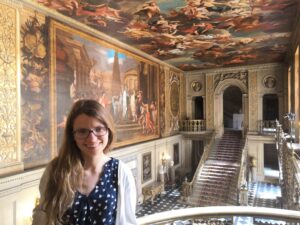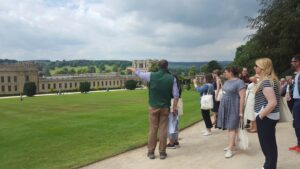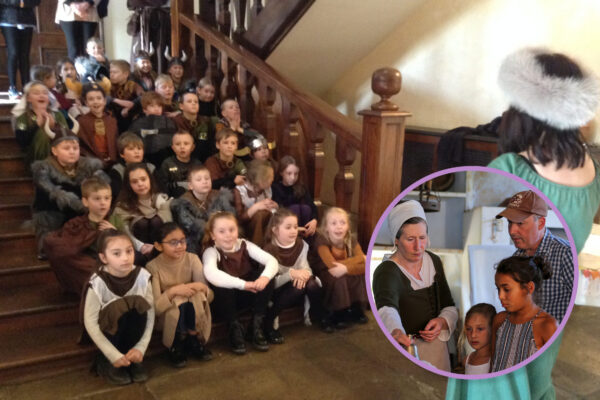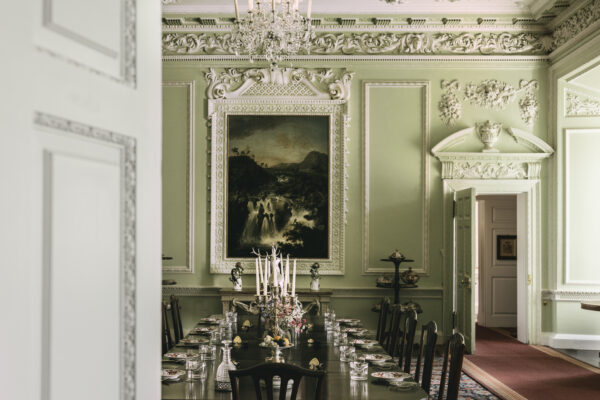Learning from the lived-in
Philippa Wood, curator at Burton Constable Hall, was Historic Houses’ 2019 Attingham Scholar. She shared her experiences of going back to school.

England’s great ‘power houses’ have a chequered past of boom and bust. Their rise and fall was a constant theme of this year’s Attingham Summer School, which I was fortunate enough to attend.
The other scholars and I visited 26 houses owned by individuals and foundations, whose different styles of ownership and management became apparent. Sites run by larger commercial organisations, while often better interpreted and more accessible, sometimes lost the feel of being a living, breathing and evolving space. Of course, visiting in a group of 48 can alter the visitor experience! At Boughton House a balance between family and visitors has been achieved partly through a short period of public opening (just one month a year). That’s a luxury most houses can’t afford and a reminder of the continuing importance of a large estate in supporting homes of this size. The owners of the entirely private houses we visited were extremely generous, permitting us to explore their homes as honoured guests rather than as welcome paying visitors. The difference in experience was refreshing, raising serious questions over how visitor-facing sites could convey that spirit without risking their collections.
Across all sites, the inevitable conflict between income generation and conservation was clearly evident. In private houses the need to actually use historic furniture increases this pressure. These tensions have inspired fascinatingly different approaches to the question of conservation versus restoration. At Calke Abbey (National Trust) the house and collections are strictly conserved ‘as found’; other National Trust sites pursue conservation less rigidly, allowing limited restorations. Privately owned houses facing different pressures followed different methods; at Woburn, where the rooms are still used, renovation in 2020 will see entire rooms and furniture suites restored to pristine condition, entirely altering the appearance of these spaces. Arguments exist for all methods, and a delicate balancing act is required. Small wonder that ‘horses for courses’ became a catchphrase during the School.
For my part, I found neither extreme particularly pleasing. The layers of history in these beautiful spaces are essential to understanding them: their stories, evolution, and use right up to today. Broughton Castle particularly charmed me with the owner’s modern bed commissioned to complement eighteenth-century Chinese wallpaper, reflecting a belief in the importance of allowing the house’s evolution to continue through modern–day collecting. This and a partly finished jigsaw in another house’s private apartments gave me a firm belief that we can’t tell just a flat tale of styles and symmetries; instead we must narrate these spaces as family homes for entertainment, socialising and daily life.

The challenges in understanding and interpreting these spaces, and the resources required to do so, were highlighted throughout the course. Largely vanished are music, scents and the bright colours of textiles, fundamental to the experiences of previous generations yet impossible to replicate today. Successive changes hide the strict hierarchy that governed these spaces until at least the eighteenth century. Even restricting opening to daylight hours limits interpretation, with the gilt mirrors partly designed to reflect candlelight as the ‘windows of the night’ now deprived of that purpose. Candles and fires symbolised wealth – without darkening our houses and allowing firelight in (and the lessons of Uppark rule strongly against such a course) the spirit of evening entertainment is near-impossible to recapture.
The Summer School, then, held some key lessons. Alas, it can’t work miracles – I still have a lot to learn! However, it provided a grounding in key concepts and a ‘toolkit’ to unlock future understanding. The course–leaders and lecturers’ enthusiasm and skill provided answers, but also posed questions to frame future research. Finally, the varied skills and interests of my fellow students revealed opportunities presented by collaboration at home and abroad with this aspect of the course proving to be one of the most valuable.
For my work as curator at Burton Constable the course was hugely inspirational, revealing new stories to tell. Our 2020 exhibition Drink, Dance and Decadence: the Gilded Age was largely created on the tour. The skills, connections and interests the School provided will help shape my research and my understanding of these spaces for the rest of my career.



